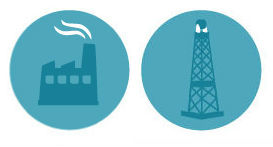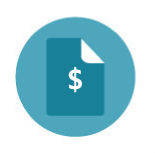Electricity and Natural Gas in New York State
Electricity and natural gas markets in New York State have been open to competition since 1998, meaning that residential or commercial customer can choose an alternate Energy Supply Company (ESCO) or stick with their local utility for electricity or natural gas service.
You have the power of choice!Learn more about Power to Choose in New York!
How to Choose an Energy Supplier
If you're trying to find a contract for your energy supply in New York State, look no further! We've got plenty of useful tips and comprehensive advice about what to look for when shopping for energy.
Start off by checking out some of the 10 questions you should always ask a potential energy supplier. Don't forget to brush up on the differences between fixed, and variable prices for energy in New York State, so that you can decide which price type is right for you. Finally, make sure to read through common contract terms and conditions so you know what to look for in your own energy contracts.
Moving to a new home?

If you are moving in to a new home in New York State, you can still sign up with an ESCO, and do not necessarily need to start with your utility company for your energy supply. However, you may need to contact your utility in order to receive an account number and to get your electricity service started in time. Call us at 1 (347) 410-8789 to help get your energy started.
If you have chosen an ESCO for your energy supply, they will be responsible for any customer-service related issue, and is in most cases will be your first point of contact for questions or concerns. However, for any technical problems, (such as a power outage or an electricity-related emergency), you should contact your local utility. You will find their emergency number listed on your bill.
Stopping service when moving to a new home?
You will need to call your ESCO and/or your utility in advance to turn off electric service before you move.
If you are signed up to a fixed rate plan with an ESCO, there may be early termination fees, depending on your plan. However, many ESCOs will let you avoid early termination fees if you provide documentation that you are moving out. Just make sure to check whether this is the case with your chosen ESCO and to notify them of an upcoming move within the required amount of notice (usually around 30 days in advance of your move).
Find Out More Suppliers in New York State
Compare customer reviews
How-to guides for your electricity in New York State
How Are Charges for Electricity Split?
The cost of your energy can be split into two main types of charges:
- the cost of your electricity supply
- the cost of delivering it to your home.
Depending on who supplies your energy, you may receive both charges on one single bill, or receive separate bills for supply and delivery.
How Your Energy Services Work in New York State
Electricity and gas services in New York work in similar ways, and the process of delivering energy to your home can be broken down into four main steps:
1. Generation/Exploitation

The first step of the process of bringing energy in your home is to generate it (in the case of electricity) or to get it out of the ground (for natural gas). Electricity in New York is generated from a mix of mostly natural gas-fired, nuclear, and hydroelectric generation. Some other renewable, coal-fired, and oil-fired generation also contribute to New York's power mix.
Natural gas is sourced from New York state and the surrounding states.
2. Transmission

Transmission is the next step in bringing energy to your home. For electricity, this means sending power from the generating plants along high-voltage transmission lines to local distribution networks. For natural gas this step refers to its transportation in pipelines (often overground, at high pressures) to the local distribution network.
3. Distribution

The third step in the process is local distribution from the local distribution network to your home. For electricity, at this stage power is transformed into a lower voltage at the distribution network and travels along local wires to your home. For gas, this is the stage where gas travels in underground pipelines in your community until it reaches your home.
4. Consumption

The final stage of this process is when energy reaches your home. You are billed for your energy supply by either your utility or your chosen ESCO.
A Brief History of Deregulation in New York
In the past, the first three steps of the electricity service were performed by one company (often called a vertically-integrated monopoly). Because the costs to build energy infrastructure were so high, economies of scale meant that a regulated, monopolistic system for energy distribution was most appropriate when electricity and gas networks first developed.
However, technological advancements and changing energy demand patterns led state authorities to consider restructuring residential energy markets to allow for competition. Following a wave of market liberalization in the US, the New York retail electricity and natural gas markets opened to competition in 1998. The goal was to give consumers more of a choice – and in turn, lower energy prices, and higher quality service.
When the New York State electricity market restructured in the late 1990s, the activities of generation, delivery, and retail supply were split amongst different companies.
What Does Deregulation Mean for Me?
What this means for the consumer is that they have more choice regarding who provides their energy and what price they pay for it. Your default option is your utility, who will always be there to sell and deliver energy to you. However, with retail energy markets open to competition, you also have the option of purchasing your energy from an alternative Energy Service Company (ESCO). When you purchase energy from an ESCO, they will be responsible for purchasing energy on the wholesale market on your behalf, and for providing you with customer service. Your local utility will still cover all tasks related to delivery. You may receive two bills after switching for this reason.
For a more detailed explanation of your electricity options, why not give us a call at 1 (832) 460-0233? We'll be happy to help you find an electricity contract that works for you.
Depending on the situation you may also need to contact with your local transmission and distribution utility (TDU). While your chosen REP is responsible for your power supply, your local utility ensures the flow of electricity to your home. They have the power to connect and disconnect your electricity, and should be your first point of contact if you experience a power outage or electricity-related emergency.
Find Out More Find your local utility
Learn more about utilities in New York State
Learn more about the energy market in New York State